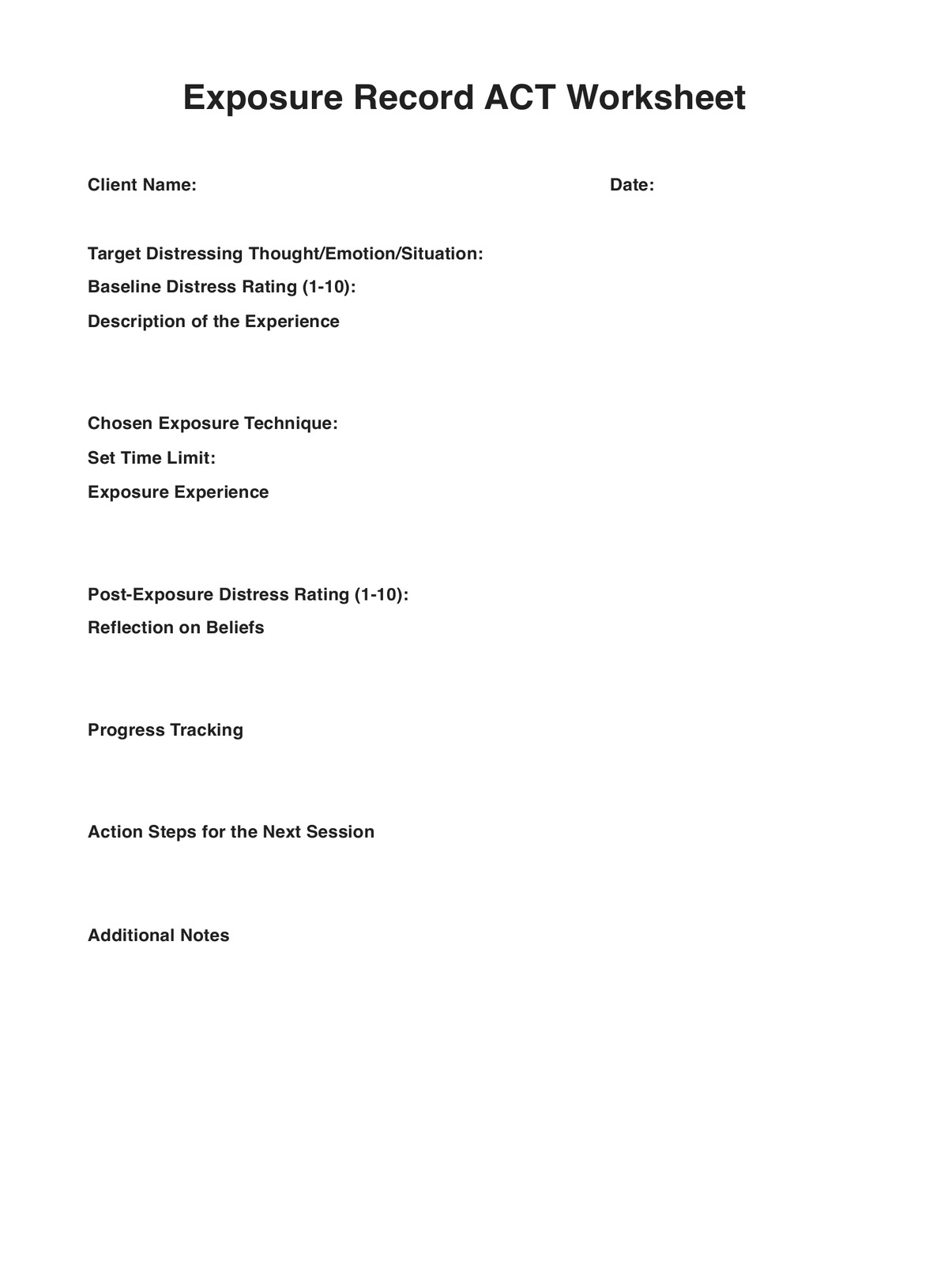The time required varies based on individual needs and the complexity of the distressing situation. Start with a manageable timeframe and gradually increase it as you become more comfortable.

Exposure Record ACT Worksheet
Discover how the Exposure Record ACT Worksheet helps manage distress by improving psychological flexibility.
Use Template
Exposure Record ACT Worksheet Template
Commonly asked questions
The worksheet assists individuals in gradually confronting distressing thoughts, emotions, or situations. This exposure process fosters psychological flexibility, reduces avoidance, and promotes healthier coping mechanisms.
The worksheet addresses phobias, anxiety disorders, trauma, obsessions, compulsions, negative self-image, and more. It's adaptable and suits a range of situations where exposure therapy is beneficial.
EHR and practice management software
Get started for free
*No credit card required
Free
$0/usd
Unlimited clients
Telehealth
1GB of storage
Client portal text
Automated billing and online payments











